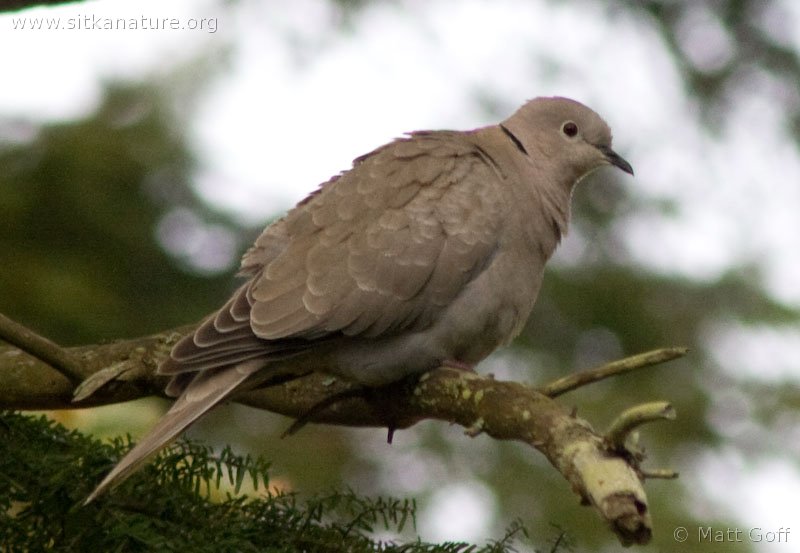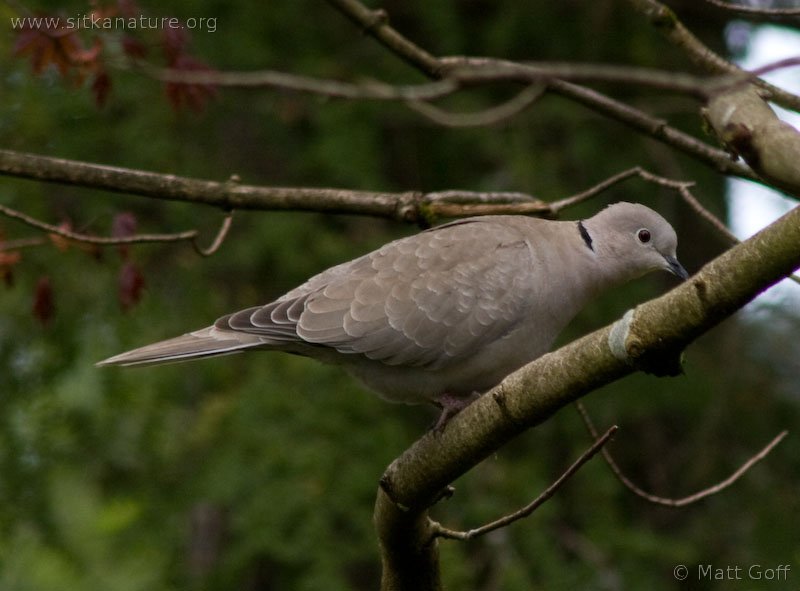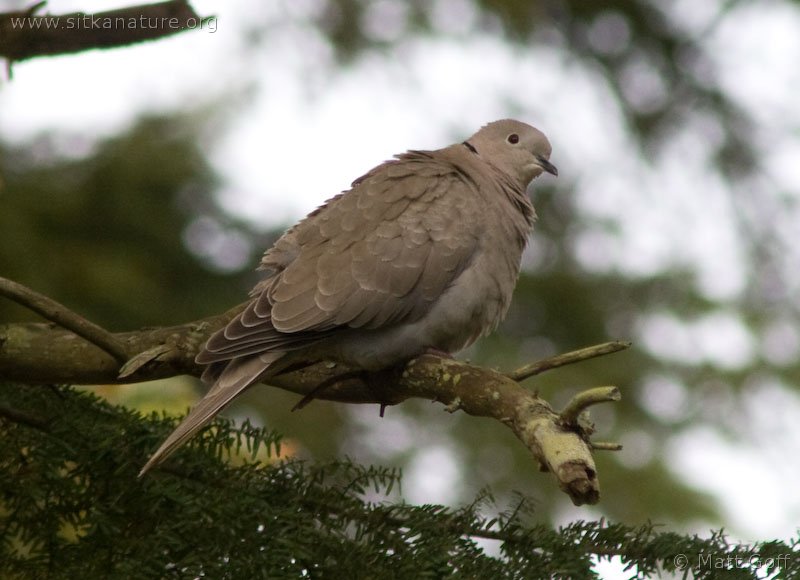Marge Ward called to tell me that there was a Eurasian Collared-Dove in their yard. I was able to get some photos of it this morning.
Eurasian Collared-Doves have been reported from Southeast Alaska several times over the past 3 years. This is the first report from Sitka. It is unclear whether they are birds that have arrived on their own from further south, or if they have been released in the region. They are not included in the official checklist of Alaska Birds. This is probably due to the questions about where the birds seen in the state have originated. The official list only includes those that are “naturally occuring”. For example, Rock Doves (pigeons) are not included, though European Starlings are. Though neither are native to the state, starlings have made it an established on their own, while Rock Doves are only present in communities where they were introduced.



Hey Matt–
They definitely seem to be appearing more and more often up there…. Down here in Tucson they’ve made healthy inroads in many rural and agricultural areas. Definitely here to stay. Hope you are well. It’s great having your perspective over in Sitka.
Take care,
Matt! Brooks
Tucson (formerly of Juneau)
We’ve been seeing a number of these doves in the vicinity of the airport here in Juneau. Quite the addition to the normal song birds that we hear in the mornings and evenings.
We have been seeing these in Gustavus too.
Thanks for the comments. Over the year and a half since I posted this, several more doves have been seen. In Ketchikan at least one person has ha over 30 gathering at a feeder at once, an I suspect the population will increase dramatically elsewhere as well in the next year or two.
I recently saw one at White Sulphur springs. They seemed to be a potential food source so I enquired with ADF&G about whether they are open to hunting. It turns out that hunting would have to be approved by the Board of Game. The first step be for ADF&G to list them as “deleterious exotic wildlife”.
Barth – thanks for the comment! When did you find one at White Sulphur? I know they’ve been up outside of Pelican (reported by Pam Bealer at her and Eric’s place), but I don’t know of too many reports away from human habitation. I’ve heard they do make for good eating, and it had been my understanding that as introduced species, there was no season and no limit on them – it sounds like my impression was mistaken though.
In early September we saw only one bird and it wasn’t shy, coming right into the construction site at the new bath house.
A couple have people have told me that when they hear the call they thought they were Grouse returning to their former range.
It would be good to be able to hunt them to add variety to the diet if they proliferate. Might help to make up for us missing out on the Blue Grouse… As Les Yaw said “You can alway count on getting a hooter on the way down the hill if you don’t have a deer in your pack”.